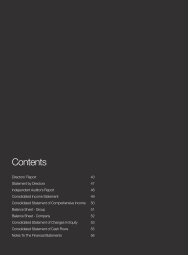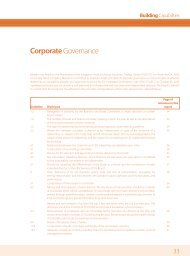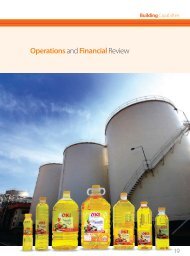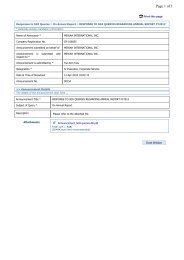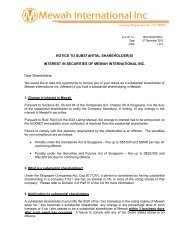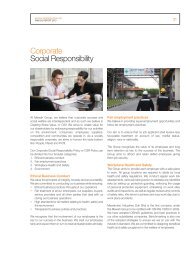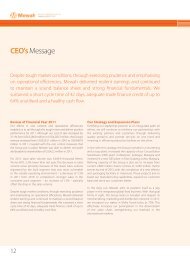Financial Statements - Mewah Group
Financial Statements - Mewah Group
Financial Statements - Mewah Group
Create successful ePaper yourself
Turn your PDF publications into a flip-book with our unique Google optimized e-Paper software.
Building Capabilities<br />
Notes to the <strong>Financial</strong> <strong>Statements</strong><br />
For the financial year ended 31 December 2011<br />
2. Significant accounting policies (continued)<br />
2.2 Revenue recognition<br />
Revenue for the <strong>Group</strong> represents the fair value of the consideration received or receivable from the gross inflow of<br />
economic benefits during the financial year arising from the course of the ordinary activities of the <strong>Group</strong>’s business.<br />
Revenue is presented net of goods and services tax, rebates and discounts, and after eliminating sales within the <strong>Group</strong>.<br />
The <strong>Group</strong> recognises revenue when the amount of revenue and related cost can be reliably measured, it is probable that<br />
the collectability of the related receivables is reasonably assured and when the specific criteria for each of the <strong>Group</strong>’s<br />
activities are met as follows:<br />
(a)<br />
Sale of goods<br />
Revenue from sale of goods is recognised when significant risks and rewards of ownership are transferred to the<br />
buyer and there is neither continuing managerial involvement to the degree usually associated with ownership nor<br />
effective control over the goods sold.<br />
(b)<br />
Interest income<br />
Interest income is recognised using the effective interest method.<br />
(c)<br />
Rental income<br />
Rental income from operating leases (net of any incentives given to the lessees) is recognised on a straight-line basis<br />
over the lease term.<br />
2.3 <strong>Group</strong> accounting<br />
(a)<br />
Subsidiaries<br />
(i)<br />
Consolidation<br />
Subsidiaries are entities (including special purpose entities) over which the <strong>Group</strong> has power to govern<br />
the financial and operating policies so as to obtain benefits from its activities, generally accompanied by<br />
a shareholding giving rise to a majority of the voting rights. The existence and effect of potential voting<br />
rights that are currently exercisable or convertible are considered when assessing whether the <strong>Group</strong> controls<br />
another entity. Subsidiaries are consolidated from the date on which control is transferred to the <strong>Group</strong>. They<br />
are de-consolidated from the date on which control ceases.<br />
57



